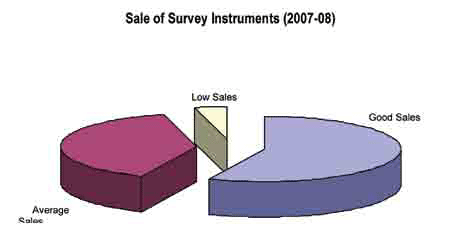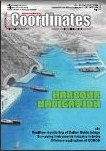
Iwave launches SiRF III based GPS module in India
Iwave Systems Technologies Private Ltd has unveiled iw-GPS receiver module based on SiRF III, a low power, miniature module for Personal Navigation, fleet management, asset tracking, personal tracking, surveying, security and other navigation devices. www.iwavesystems.com

The effort for realizing fully autonomous and operative Unmanned Aerial Systems (UAS) induced the need of developing innovative techniques for integrating measurements derived from different aircraft navigation systems. Since no human aid is available onboard UAVs, navigation hardware must attain larger capabilities than the ones of manned platforms. In particular, the most important features that shall be considered are autonomy, safety,…

here has been a renewed interest in exploration of the moon and in the past four decades the exploration of moon has become a reality [1]. A number of missions have been flown to the moon by many countries. Many of these missions have carried imaging systems that, collectively, have returned an incredible wealth of information on the shape and surface characteristics of the moon. Mapping of moon began in the seventeenth Century by Galileo…

Oil was first commercially exploited in the North Sea in the 1960’s. Production is underpinned by regular and reliable helicopter operations enabling the movement of staff and equipment to and from the shore. However, the North Sea environment is challenging for rotorcraft operations from many perspectives, not least its remoteness from the shore, the exacting weather conditions and the changeable nature of rigs…

Contrary to the gloomy economic picture painted by the financial pundits at the end of 2008, the reactions to the global economic slowdown are mixed in the survey equipment industry in India. The growth in the survey industry has been fuelled by the spate of infrastructure projects in the country and may well ride out the economic slowdown wave without feeling the pinch much feel the players in the industry…
On Feb 10, 2009 two communication satellites collided in space.
It happened over Northern Siberia, 490 miles above the earth surface.
The low-earth orbit (LEO) location of the collision …

DigitalGlobe announces agreement with Nokia for use of imagery
DigitalGlobe and Nokia have agreed to bring high-resolution satellite and aerial imagery to Nokia Maps, both on mobile devices and on Ovi, improving the global driving, hiking and walking navigation capabilities for consumers who use these applications. www.digitalglobe.coma

There are many traditional surveying methods used for the large-scale bridge structure deformation monitor such as the accelerometer measure, the total station surveying and the laser collimation, but these methods are limited by its function of which the continuity, timeliness and automaticity can not meet the need of the large-scale construction dynamic monitor. In recent years, with the GPS hardware and software technology developed, especially the GPS receiver with the high data-collection frequency (for example 10Hz even 20Hz[1][4]) appearanced as well as the GPS data processing was improvement, the GPS-RTK technology applied in large-scale bridge dynamic deformition monitor with real-time or quasi-realtime has become true[2][3].











 (5.00 out of 5)
(5.00 out of 5)